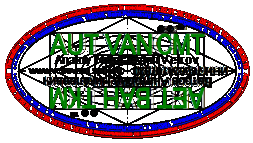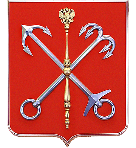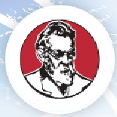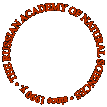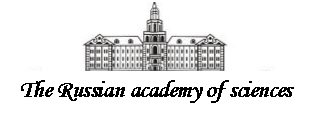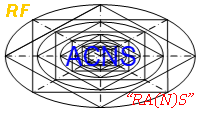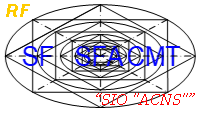“The IInd international scientific conference on fundamental sciences
"Actual problems of modern science and technology: cognitive approach"” (the 01st-31st of March 2016 y.)
(page 1 from 1 pages)
The fundamental scientific researches branch 3.
“Cognitive modeling in the nano-technologies and information technologies” (“ONIT”)
The salutatory word
on the branch “Cognitive modeling in the nano-technologies and information technologies” (“ONIT”)
of “SIO "ACNS"” (day time session)
The place of carrying out, room, date and interval of time
RF, Saint-Petersburg city, “SIO "ACNS"”, from the 01st of January 2016 y. 00:00:00 to the 01st of March 2016 y. 23:59:59
|
№
|
UDC
of scientific report
and (or) multimedia-presentation
|
First name,
Middle initials, Last name,
scientific degree, scientific rank,
(name of academy of sciences
or HEI which has issued diploma),
post in organization,
country, city, organization,
WWW address and E-mail address
of the author of scientific report
and (or) multimedia-presentation
|
Name (nomen)
of scientific report
and (or) multimedia-presentation
|
URL
of scientific report
and (or) multimedia-presentation
|
|
1.
|
UDC
|
Vetrov Anatoly Nikolaevich,
academician of (natural) sciences
(“SIO "ACNS"”),
The President
of “SIO "ACNS"”,
RF, Saint-Petersburg city,
“SIO "Academy of cognitive
natural sciences"”,
www.vetrovan.spb.ru,
vetrovan@nwgsm.ru
|
“The fundamental developments branch
“Cognitive modeling
in the nanotechnologies
and information technologies” (“ONIT”)
of “SRI "SFA CMT" of "RA(N)S"
named after V.N. Veniaminov””
(scientific report)
|
(download)
|
The salutatory word of the invited
on the branch “Cognitive modeling in the nano-technologies and information technologies” (“ONIT”)
of “SIO "ACNS"” (day time session)
The place of carrying out, room, date and interval of time
RF, Saint-Petersburg city, “SIO "ACNS"”, from the 01st of January 2016 y. 00:00:00 to the 01st of March 2016 y. 23:59:59
The scientific reports and (or) multimedia-presentations on fundamental sciences did not give
The open performances with scientific reports and (or) multimedia-presentations
on sections of “SIO "ACNS"” (residents and non-residents)
3.3.1. The fundamental scientific researches section
“The theory of electronics, radio engineering and connection” (“SVLTSEB”)
Þ The theoretical electronics and radio engineering – the general questions of theoretical electronics and radio engineering,
theoretical bases of electronic technics, theory of radio engineering, theory of materials for electronics and radio engineering,
theory of technology and equipment for electronical and radio engineering manufacture,
theory of designing and constructing of electronical devices and radio-electronical equipment,
theory of electrical-vacuum and gas-discharge devices and devices, theory of accelerators of charged particles and plasma,
theory of solid-state devices, theory of quantum electronics, theory of holography,
theory of crio-electronics, theory of radio-electronical circuits, theory of radio-waves distribution,
theory of antennas, theory of wave-transports, theory of elements of micro-wave techniques,
theory of radio-transmision and radio-receiving devices,
theory of radio-engineering systems of sounding, location and navigation,
theory of television technics, theory of record and reproduction of signals, theory of electrical-acoustics,
theory of ultra-sonic and infra-sonic technics, theory of infra-red technics,
theory of units, details and elements of radio-electronical equipment,
theory of devices for radio-engineering measurements, theory of systems and units of information display,
theory of cognitive modeling technology
in theoretical (radio-)electronics and radio-engineering (radio-electronical equipment);
Þ The theoretical connection – the general questions of theoretical connection,
theory of connection, theory of designing and constructing of connection devices,
theory of technology and equipment for assembly and adjustment of connection equipment,
theory of systems of information transfer, theory of communication lines,
theory of multichannel connection, theory of networks and centres of connection, theory of services and connection services,
theory of telegraph (cable) connection and equipment, theory of systems and equipment of data transmission,
theory of tele-information services and equipment, theory of tele-communication and equipment,
theory of transfer systems of moving images and sound, theory of facsimile connection and equipment,
theory of radio-communication and radio-broadcasting, theory of hyberoptic (LED) connection and equipment, theory of TV,
theory of optical connection in free environment and equipment, theory of post connection,
theory of cognitive modeling technology in theoretical connection (terminal equipment of data transmission).
The place of carrying out, room, date and interval of time
RF, Saint-Petersburg city, “SIO "ACNS"”, from the 01st of January 2016 y. 00:00:00 to the 01st of March 2016 y. 23:59:59
The reporters on the fundamental scientific researches section
“The theory of electronics, radio engineering and connection” (“SVLTSEB”)
The scientific reports and (or) multimedia-presentations on fundamental sciences did not give
3.3.2. The fundamental scientific researches section
“The theory of automatics, computer engineering
and system analysis based on cognitive modeling technology” (“SITA”)(*)
Þ The theoretical automatics and computer facilities (engineering) –
the general questions of theoretical automatics and computer facilities,
theory of automatic control, theory of programming, theory of computer engineering,
theory of elements, units and devices of automatics and computer engineering,
theory of input-output devices, theory of memory devices,
theory of technology and equipment for manufacture of automatics means and computer engineering,
theory of keyboard and calculating-tabulating computer machines, theory of analog computers (АPC),
theory of digital computers and computer complexes (DPC),
theory of analog-digital (hybrid) computers and computer complexes,
theory of computer centres (PCC), theory of computer networks (PCN),
theory of software of computers, complexes and networks,
theory of automatic systems of mesuarement, regulation and control, theory of systems of tele-control and tele-measurement,
theory of automated control systems of technological processes,
theory of automated systems of organizational management, theory of design automation,
theory of scientific researches automation,
theory of cognitive modeling technology in theoretical automatics and computer engineering;
Þ The theoretical system analysis (*) – the general questions of the theoretical system analysis,
theory of tendencies, dependences and laws of the system analysis of objects, processes and phenomena,
theory of cognitive modeling technology with dynamic cloning, verification and subverification,
theory of iterative cycle and technique of use of cognitive modeling technology,
theory of parametrical cognitive models block for the system analysis of information-educational environments
and increase of functioning efficiency of automated training system
with properties of adaptation based on cognitive models (cognitive models of subject of training and means of training),
theory of representation ways of structure of cognitive model and problem environments:
formal classical of the 0th generation (logical and production models),
nonformal classical of the 0th generation (semantic network, frame network and ontology),
formal new of the 0th generation (calculus of theory of sets and corteges on domains
and innovative calculus of theory of sets and graphs),
nonformal new of the 0th generation (multilevel structural scheme
and multilevel encapsulated pyramids combining theory of graphs and theory of sets),
flat of the 1st generation (cognitive disc and cognitive circle),
volumetric of the 1st generation (cognitive cylinder, cognitive cone and cognitive sphere),
flat and volumetric of the 2nd generation (one-, two-, three-, four-, five- and more cognitive disc,
cognitive circle, cognitive cylinder, cognitive cone and cognitive sphere),
hybrid of the 3rd generation (combinations of the existing cognitive models),
theory of algorithm of formation of cognitive model structure,
theory of technique of parameters research of cognitive model,
theory of algorithm of analysis of a posteriori results of research,
theory of adaptive automation means of information-educational environment
(basic and applied diagnostic module, electronic textbook,
laboratory practical work, electronic dean, electronic library and others),
theory of technical means of adaptive information interaction support
(adaptive representation of sequence of information fragments processor,
question-answers structures sequence processing processor, linguistic processor and other),
theory of statistical substantiation of practical use of received results,
theory of factors influencing to efficiency of knowledge formation in information-educational environment
and functioning efficiency of objects, processes and phenomena,
theory of organization and plan of carrying out of experimental research of cognitive model parameters,
theory of preliminary processing of a posteriori results of diagnostics,
theory of choice of the statistical analysis methods of generated a posteriori data sets,
theory of the analysis of productivity dynamics of objects, processes and phenomena,
theory of the dispersion analysis, the regression analysis, the discriminant analysis, the cluster analysis,
multivariate scaling, the factor analysis, theory of bibliographic lists.
The place of carrying out, room, date and interval of time
RF, Saint-Petersburg city, “SIO "ACNS"”, from the 01st of January 2016 y. 00:00:00 to the 01st of March 2016 y. 23:59:59
The reporters on the fundamental scientific researches section
“The theory of automatics, computer engineering,
system analysis based on cognitive modeling technology” (“SITA”)(*)
The scientific reports and (or) multimedia-presentations on fundamental sciences did not give
3.3.3. The fundamental scientific researches section
“The theory of nano-technologies for the mechanical engineering, instrument making,
polygraphy, reprography and foto-cinema-technics,
easy and food-processing industry,
transport, architecture and construction” (“SNT”)(*)
Þ The theoretical nano-technologies for mechanical engineering –
the general questions of theoretical nano-technologies for mechanical engineering,
theory of nano-technologies
for machines science and details of machines, for machine-building materials, for technologies of mechanical engineering,
for foundry manufacture, for forge-stamp manufacture, for assembly manufacture,
for cutting materials, for electrical-physical-chemical processings,
for thermal and strengthening powder materials, for manufacture of nonmetallic products,
for machine-tool construction, for robotics, for tool manufacture, for mining mechanical engineering,
for metallurgical mechanical engineering, for rector constraction, for turbine construction,
for special power-engineering installations, for chemical and oil mechanical engineering,
for locomotive construction and carriage car building, for engine construction, for motor car industry, for ship building,
for aircraft construction, for space technics and rocket production, for hoisting-transport mechanical engineering,
for building and road mechanical engineering, for communal (municipal) mechanical engineering,
for tractor and agricultural mechanical engineering, for mechanical engineering of light industry,
for polygraphical mechanical engineering, for mechanical engineering of food-processing industry,
for mechanical engineering of tradeand public catering, for manufacture of household machines and devices,
for manufacture of weapon, for other branches of mechanical engineering,
theory of cognitive modeling technology in theoretical nano-technologies for mechanical engineering;
Þ The theoretical nano-technologies for instrument making –
the general questions of theoretical nano-technologies for instrument making,
the theory of nano-technologies
for theoretical bases of instrument making, for general production technology and equipment in instrument making,
for designing and constructing of devices, for measurement devices of electrical and magnetical poles (sizes),
for measurement devices of mechanical sizes, for measurement devices of time and frequency,
for measurement devices of structure and physical-chemical properties of substances and materials,
for measurements devices of thermal-technical and thermal-physical parameters,
for measurement devices of acoustic sizes and characteristics,
for measurement devices of optical and lighting-technical sizes and characteristics,
for measurement devices of ionisation radiations, for devices of not destroying control of products and materials,
for general structural elements, units of measuring devices and systems, means of office equipment,
theory of cognitive modeling technology in theoretical nano-technologies for instrument making;
Þ The theoretical nano-technologies for polygraphy, reprography and foto-cinema-technics –
the general questions of theoretical nano-technologies for polygraphy, reprography and foto-cinema-technics,
theory of nano-technologies for polygraphy, reprography and foto-cinema-technics,
theory of cognitive modeling technology
in theoretical nano-technologies for polygraphy, reprography and foto-cinema-technics (print);
Þ The theoretical nano-technologies for light industry –
the general questions of theoretical nano-technologies for light industry,
theory of nano-technologies
for textile industry, for knitted industry, for clothing industry,
for tanning industry, for fur industry,
for industry of an artificial leather and film materials, for shoe industry,
for leather-haberdashery industry, for bristle-brush manufactures, for manufacture of accessories,
theory of cognitive modeling technology in theoretical nano-technologies for light industry;
Þ The theoretical nano-technologies for food-processing industry –
the general questions of theoretical nano-technologies for food-processing industry,
theory of nano-technologies
for food raw materials and auxiliary materials, for processes and devices of food manufactures,
for grain-elevatory and flour-sereals industry, for mixed fodder industry,
for baking and macaroni industry, for confectionery industry, for sugar industry,
for starched industry, for barmy industry, for brewing industry,
for spiritous industry, for high-alcohol drinks industry,
for vinous industry, for soft drinks industry,
for canning, vegetable drying and food-concentrat industry, for food-gustatory industry,
for tobacco industry, for meat and bird fancier industriy,
for manufacture of eggs and egg products, for dairy industry, for creamery industry,
theory of cognitive modeling technology in theoretical nano-technologies for food-processing industry;
Þ The theoretical nano-technologies for transport –
the general questions of theoretical nano-technologies for transport,
theory of nano-technologies
for railway transport, for motor car transport, for water (sea) transport, for air transport,
for pipeline transport, for industrial transport, for municipal transport,
for interaction of different types of transport, for mixed transportations, for other types of transport,
theory of cognitive modeling technology in theoretical nano-technologies for transport;
Þ The theoretical nano-technologies for architecture and construction (*) –
the general questions of theoretical nano-technologies for architecture and construction,
engineering-theoretical bases of construction, theory of architecture,
theory of building materials and products, theory of building constructions,
theory of technology of building-installation works,
theory of technology of production of building materials and products,
theory of machines, mechanisms, equipment and tool,
used in construction and industry of building materials,
theory of engineering researches in construction, theory of architectural-building designing,
theory of regional lay-out, theory of town-planning,
theory of objects of construction and engineering support of construction objects,
theory of tendencies, dependences and laws in architecture and construction,
theory of cognitive modeling technology with dynamic cloning, verification and subverification,
theory of iterative cycle and technique of use of cognitive modeling technology,
theory of parametrical cognitive models block for architecture and construction
(buildings and constructions based on cognitive disc, cognitive circle,
cognitive cylinder, cognitive cone and cognitive sphere),
theory of representation ways of structure of cognitive model and problem environments:
formal classical of the 0th generation (logical and production models),
nonformal classical of the 0th generation (semantic network, frame network and ontology),
formal new of the 0th generation (calculus of theory of sets and corteges on domains
and innovative calculus of theory of sets and graphs),
nonformal new of the 0th generation (multilevel structural scheme
and multilevel encapsulated pyramids combining theory of graphs and theory of sets),
flat of the 1st generation (cognitive disc and cognitive circle),
volumetric of the 1st generation (cognitive cylinder, cognitive cone and cognitive sphere),
flat and volumetric of the 2nd generation (one-, two-, three-, four-, five- and more cognitive disc,
cognitive circle, cognitive cylinder, cognitive cone and cognitive sphere),
hybrid of the 3rd generation (combinations of the existing cognitive models),
theory of algorithm of formation of cognitive model structure,
theory of technique of parameters research of cognitive model,
theory of algorithm of analysis of a posteriori results of research,
theory of adaptive automation means of architecture and construction
(automation means of forming and research of cognitive disc,
automation means of forming and research of cognitive circle,
automation means of forming and research of cognitive cylinder,
automation means of forming and research of cognitive cone,
automation means of forming and research of cognitive sphere,
automation means of forming and research
of one-, two-, tree-, fore-, five- and more cognitive sphere and others),
theory of statistical substantiation of practical use of received results,
theory of factors influencing to efficiency of architecture and construction of buildings and constructions,
theory of organization and plan of carrying out of experimental research of cognitive model parameters,
theory of research of parameters of parametrical cognitive models block,
theory of preliminary processing of a posteriori results of diagnostics,
theory of choice of the statistical analysis methods of generated a posteriori data sets,
theory of the analysis of productivity dynamics of construction,
theory of the dispersion analysis, the regression analysis, the discriminant analysis, the cluster analysis,
multivariate scaling, the factor analysis, theory of bibliographic lists.
The place of carrying out, room, date and interval of time
RF, Saint-Petersburg city, “SIO "ACNS"”, from the 01st of January 2016 y. 00:00:00 to the 01st of March 2016 y. 23:59:59
The reporters on the fundamental scientific researches section
“The theory of nano-technologies for the mechanical engineering,
instrument making, polygraphy, reprography and foto-cinema-technics,
easy and food-processing industry, transport, architecture and construction” (“SNT”)(*)
The scientific reports and (or) multimedia-presentations on fundamental sciences did not give
“The IInd international scientific conference on fundamental sciences
"Actual problems of modern science and technology: cognitive approach"” (the 01st-31st of March 2016 y.)
(page 1 from 1 pages)


